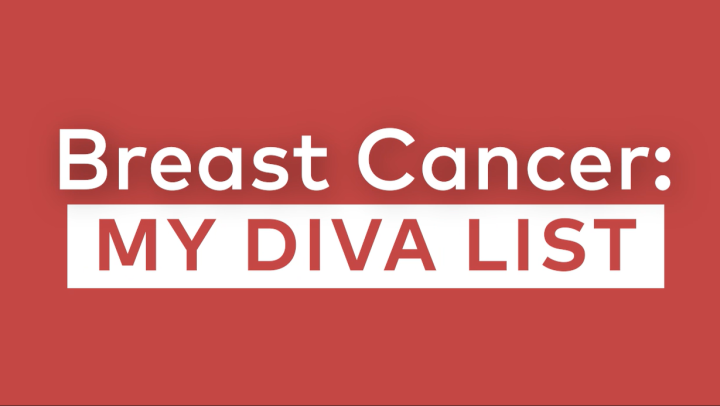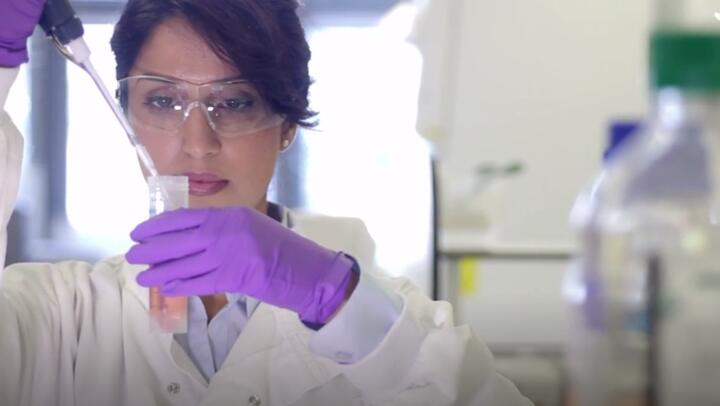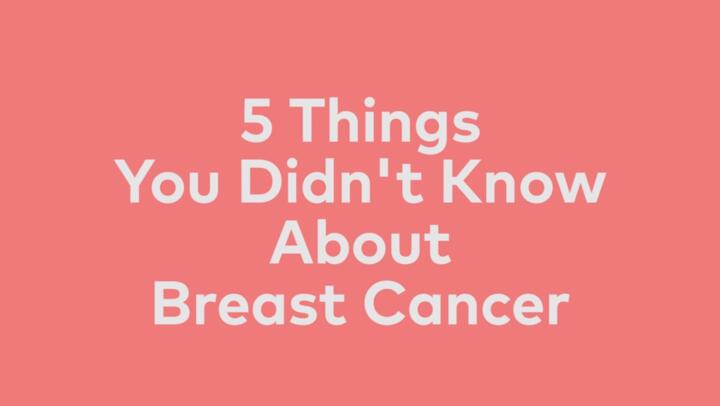What is uterine cancer?
Uterine cancer is cancer that starts in the uterus. The uterus, or womb, is a hollow, pear-shaped organ in a female’s lower abdomen, between the bladder and the rectum.
Most cases of uterine cancer are endometrial cancer. These cancers originate in the inner lining of the uterus. Uterine cancer is the most common gynecologic cancer. It affects more than 43,000 people annually in the United States.
Common uterine cancer symptoms are abnormal vaginal bleeding and bleeding after menopause. You may also have a vaginal discharge. The tumor may cause pelvic pain and may make it difficult or painful to urinate.
Some conditions in the uterus can cause similar symptoms, but are not cancer. Three of these benign conditions include:
Endometriosis: Tissue that looks and acts like normal endometrial tissue begins to grow in unusual places. This includes the surface of the ovaries, on the outside of the uterus, and in other tissues in the abdomen. It is common throughout ages 30 to 50, especially if someone has never been pregnant.
- Fibroid tumors: These are common, benign tumors of the uterine muscle. These tumors often occur after age 40 and beyond. Symptoms, which depend on tumor size and location, include irregular bleeding, vaginal discharge, and frequent urination. Many times, however, fibroids do not cause symptoms and do not need treatment. After menstrual periods cease, fibroid tumors may become smaller and disappear.
- Hyperplasia: An increase in the number of normal cells lining the uterus. Although it is not cancer, it may develop into cancer in some cases. The most common symptoms are heavy menstrual periods, bleeding between periods, and bleeding after menopause.
The cause of uterine cancer is not known, but high estrogen levels may play a role. The risk is greater when menstruation lasts longer than average. This includes people who began puberty early, have never given birth, or start menopause late.
Other conditions, including obesity, diabetes, infertility, or polycystic ovarian syndrome (PCOS) also increase risk. So can certain medications, such as tamoxifen and estrogen replacement therapy..
To diagnose uterine cancer, a biopsy is typically necessary. In the early stages, surgery is usually successful and the prognosis is excellent. Doctors often recommend radiation therapy after surgery. Radiation therapy can also treat people who are not candidates for surgery. Chemotherapy may also be a treatment for more advanced uterine cancers.
Seek prompt medical care if you develop symptoms that could be uterine cancer. Early diagnosis offers the best chance for a cure and can reduce complications. Some complications of uterine cancer can be serious or even life threatening.
Seek immediate medical care (call 911) for serious symptoms such as the inability to have a bowel movement or urinate, uncontrollable or severe vaginal bleeding, or severe pelvic or abdominal pain.
What are the symptoms of uterine cancer?
Abnormal vaginal bleeding, bleeding after menopause, and pelvic pain are common uterine cancer symptoms. Someone in menopause may notice a clear or whitish vaginal discharge.
As uterine cancers grow or spread to other organs, they can create a sensation of pelvic fullness. Tumors can also interfere with urination or bowel movements.
Common uterine cancer symptoms include:
Clear or whitish vaginal discharge, vaginal spotting, or bleeding that occurs after menopause
Difficult or painful urination or bowel movements
Heavy vaginal bleeding
Pain during sexual intercourse
Pelvic or abdominal pain, pressure, or fullness
- Vaginal bleeding between periods or for more than seven days
In some cases, uterine cancer can be urgently life threatening. Seek immediate medical care (call 911) for serious symptoms including:
Breathing problems, such as shortness of breath, difficulty breathing, or labored breathing
Inability to urinate or have bowel movements
Severe pelvic or abdominal pain
- Uncontrolled or heavy bleeding (hemorrhage)
What are the stages of uterine cancer?
Staging is a way of describing cancer at the time of diagnosis — how much cancer is present and where it is. It helps your doctor plan treatment. It also gives your doctor an idea about how successful it is likely to be.
The stage of uterine cancer will depend on the following TNM factors:
How deeply the tumor (T) has grown into the uterus
Whether cancer cells are present in your lymph nodes (N)
- Whether the cancer has spread — or metastasized (M) — to other organs
There are four main uterine cancer stages: I, II, III and IV. Higher numbers mean more advanced disease. Lower numbers mean earlier disease. Treatment is more likely to be successful in early stages.
Stage I
This is the earliest stage of uterine or endometrial cancer. The cancer is growing only inside the uterus. It may have invaded the muscular layer below the lining, but it remains confined to the uterus. It is not in any lymph nodes and has not spread anywhere.
Stage II
Stage II is still considered early disease. The cancer has grown out of the main body of the uterus and into the connective tissue of the cervix. The cervix is the narrow, lower portion of the uterus. However, the cancer has not left the uterus itself. It has not yet spread to lymph nodes or other organs or tissues.
Stage III
In stage III, the cancer has spread outside the uterus, but still remains in the pelvic area. This includes the outer surface of the uterus, fallopian tubes, ovaries, vagina, or tissues surrounding the uterus. In early stage III, the cancer has not spread to any lymph nodes. Later stage III cancers have spread to lymph nodes in the pelvis or around the abdominal aorta.
Stage IV
Stage IV is advanced cancer. The cancer has spread to the bladder, rectum, or distant body sites.
What causes uterine cancer?
The cause of uterine cancer is not known, but excess estrogen seems to increase the risk.
During a female’s reproductive years, the uterine lining, or endometrium, is in a continual cycle of growth and maturation. Estrogen encourages growth of the endometrium. Progesterone encourages maturation.
When pregnancy does not occur, progesterone levels fall and cause endometrial shedding and menstruation. High estrogen levels can lead to excessive growth (hyperplasia) of the endometrium, which can develop into cancer.
Uterine cancer occasionally runs in families, and people who have syndromes that increase the general risk of cancer may develop endometrial cancer.
What are the risk factors for uterine cancer?
Certain factors may indicate an increased risk of developing uterine cancer. However, not everyone who receives a diagnosis will have risk factors, and not everyone with risk factors will develop uterine cancer.
According to research cited by Memorial Sloan-Kettering Cancer Center, African American women with uterine cancer have nearly twice the mortality rate of white women with the disease. Researchers are exploring possible cellular reasons for this, but experts also cite healthcare inequity and disparities in access to care as factors.
People who have taken tamoxifen for breast cancer treatment or prevention have increased risk for uterine cancer, as do those who have had radiation therapy to the pelvic area. Other possible risk factors include:
Age 50 or older
Diabetes, high blood pressure, or obesity
Family history of endometrial cancer or familial cancer syndromes, such as hereditary nonpolyposis colon cancer (HNCC)
First menstrual period at a young age or late onset of menopause
Estrogen replacement therapy
History of endometrial hyperplasia
Infertility or having no children
- Polycystic ovarian syndrome (condition associated with multiple small ovarian cysts and menstrual irregularities)
How do you prevent uterine cancer?
It is not always possible to prevent uterine cancer. You may be able to lower your risk by:
Maintaining a healthy body weight. Being overweight or obese triples the risk of endometrial cancer.
Taking combination estrogen and progestin birth control pills or using a progestin-secreting IUD (intrauterine device), which can reduce overgrowth of the uterine lining
Treating diabetes, high blood pressure, and benign endometrial problems, such as hyperplasia
- Weighing the risks and benefits of estrogen replacement therapy with your doctor
If you have HNCC, talk with your doctor about preventive surgery due to the very high risk of endometrial cancer.
What are the diet and nutrition tips for uterine cancer?
Depending on the cancer stage and treatment, you may or may not have symptoms that affect your appetite or ability to eat. Chemotherapy, or chemo, often causes problems in this regard. But everyone reacts differently to it.
If you find yourself struggling with diarrhea, nausea, or loss of appetite, try these tips:
Drink or sip fluids throughout the day to avoid dehydration and stay away from alcohol and caffeine.
Eat easily digestible foods, such as starches, and avoid raw fruits and vegetables; nuts; and greasy, fried, acidic, or spicy foods.
Eat several small meals throughout the day instead of three large ones and do not let your stomach get completely empty.
Eat warm or cold food instead of hot food.
Have someone else do the cooking if smells bother you.
- Use plastic utensils if food takes on a metallic taste.
Talk with your doctor if you are having problems with nausea, vomiting, diarrhea, or appetite loss. It may be possible to adjust your treatment or add medicines to relieve your symptoms. A licensed dietician can also provide guidance on maintaining nutrition while managing symptoms.
How do doctors diagnose uterine cancer?
To diagnose uterine cancer, your doctor will take a medical history, perform an exam, and order testing. Questions your doctor may ask include:
What symptoms are you experiencing?
When did these symptoms begin?
Have your symptoms been continuous or do they come and go?
What, if anything, seems to make your symptoms better or worse?
Are you still menstruating? When was your last menstrual period?
Have you ever been pregnant?
Have you ever used hormonal birth control or taken hormone replacement?
Have you ever taken medicine to treat or prevent breast cancer?
Do you have a personal or family history of cancer?
What other medical conditions do you have?
- What medications do you take?
The physical exam will include a pelvic exam to evaluate your vagina, uterus, cervix, and ovaries. Your doctor may also do a Pap test and feel your bladder and rectum.
Testing may include:
Ultrasound, which is usually a transvaginal ultrasound that uses a probe inside the vagina to provide a closer view of the uterus
Hysteroscopy, which uses a lighted scope to examine the inside of the uterus
Biopsy, or the removal of a sample of tissue via a hollow needle or scalpel for testing
- Dilation and curettage (D & C), a procedure in which the cervix is dilated (expanded) so that the cervical canal and uterine lining can be scraped with a spoon-shaped instrument called a curette
When cancer is found, doctors use other tests to determine if the disease has spread from the uterus to other parts of the body. These procedures may include blood tests, chest X-rays, computed tomography (CT or CAT) scans of the abdomen, an ultrasound, and special exams of the bladder, colon, and rectum.
What are the treatments for uterine cancer?
The goal of uterine cancer treatment is to cure the cancer or bring about a complete remission of the disease. Remission means that there is no longer any sign of cancer in your body, although it may recur later.
In early stages, uterine cancer may be curable with surgery alone or in combination with radiation therapy. Your doctor may add chemotherapy if your cancer is more advanced.
If you are not eligible for surgery, your doctor may recommend radiation therapy alone. After your treatment is complete, you will maintain continued regular follow-up with your doctor to monitor any new symptoms and watch for recurrence..
It is important to follow your treatment plan carefully to ensure the best possible chance for a cure and detect any possible recurrence early.
Common treatments for uterine cancer
Common treatments for uterine cancer include:
Chemotherapy to attack cancer cells
Hormonal therapy to reduce estrogen production or help counteract the effects of estrogen
Immunotherapy to boost the immune system to fight cancer
Participation in a clinical trial test of new therapies and treatments for uterine cancer
Radiation therapy to attack cancer cells
- Surgery to remove the cancer and determine the extent of any spread
Supportive treatments
Other therapies may enhance your general state of health and help offset any side effects of treatment:
Antinausea medications
Blood cell growth factors to increase the number of healthy blood cells
Blood transfusions to temporarily replace blood components, such as red blood cells, that have been reduced or lost
Dietary counseling to help maintain strength and nutritional status
- Pain medications as needed
Complementary treatments
Complementary treatments may help some women better deal with uterine cancer and its treatments. These treatments are for use with traditional medical treatments. They are not meant to substitute for full medical care.
Complementary treatments may include:
Massage therapy
- Yoga
Hospice care
If uterine cancer progresses to an advanced stage and becomes unresponsive to treatment, the goal of treatment may shift. Instead of curing the disease, treatment may focus on keeping you comfortable and maximizing quality of life.
Hospice care involves medically controlling pain and other symptoms while providing psychological and spiritual support, as well as services to support your family members.
How does uterine cancer affect quality of life?
Health-related quality of life (HRQoL) describes how a disease affects a person’s overall well-being. It includes mental, physical and emotional health. It also includes social and sexual functioning and your ability to perform daily functions and roles. Non-health factors, such as finances, can play a role in HRQoL as well.
It is no surprise that cancer, including uterine cancer, can affect HRQoL. During treatment, it can be difficult to deal with side effects and symptoms, such as fatigue. Doctors and healthcare providers recognize this aspect of cancer treatment. Managing issues and worries that affect HRQoL is an important part of cancer care. And this continues after treatment through the transition to survivorship.
Interestingly, research suggests that physical activity may combat some poor quality of life issues in uterine cancer survivors. Increasing physical activity seems to improve someone’s perceptions of overall health, role limitations, and distress over physical symptoms. Social support and support groups can play a role in helping with many of the mental and emotional issues that impact quality of life.
What are the potential complications of uterine cancer?
Complications of untreated uterine cancer can be serious, even life threatening in some cases. You can help reduce your risk of serious complications by following your treatment plan. Complications of uterine cancer include:
Anemia (low red blood cell count)
Hemorrhage
- Spread of cancer
What is the survival rate and prognosis for uterine cancer?
Uterine cancer is highly treatable in early stages, when it is still confined to the uterus.
It is common to talk about uterine cancer survival rate in terms of a 5-year relative survival rate. This rate looks at people with the same type and stage of cancer five years after diagnosis. It compares them to people of the same age and sex in the general population.
The overall 5-year uterine cancer survival rate is 81%. When the cancer is only in the uterus, the 5-year relative survival is 95%. With regional spread, the rate is 69%. The rate drops to 17% when it has spread to distant sites, such as the bladder, bones, or lungs.
Overall, endometrial cancer will cause an estimated 13,000 deaths this year. This makes it the sixth leading cancer-related cause of death among American women.
However, there are more than 600,000 uterine cancer survivors. So, it is important to keep these numbers in perspective. They are only statistics. They cannot tell you how long you will live after a uterine cancer diagnosis. Each case is unique. There are many factors that affect prognosis, including your age and how the cancer responds to treatment. Your doctor is the best source for information about your outlook.


















